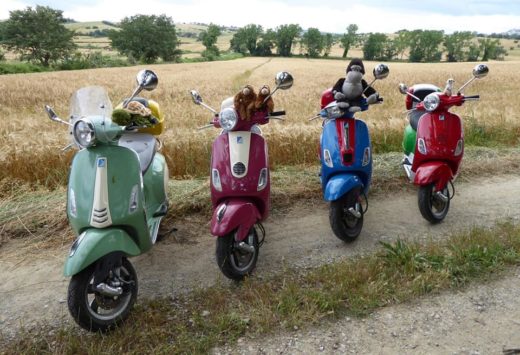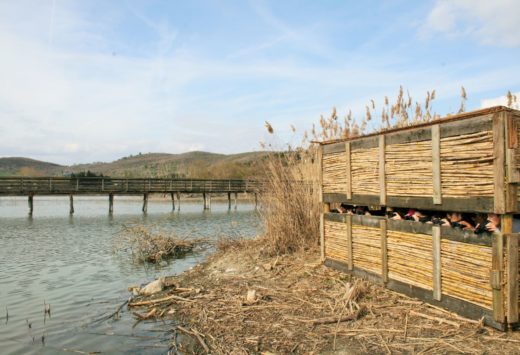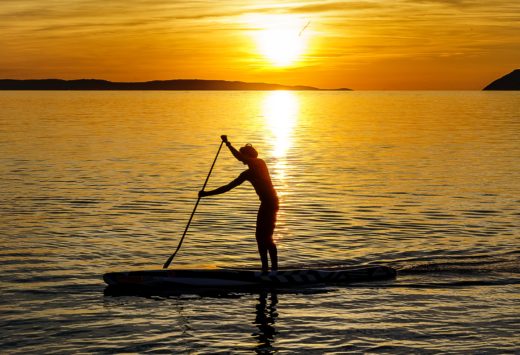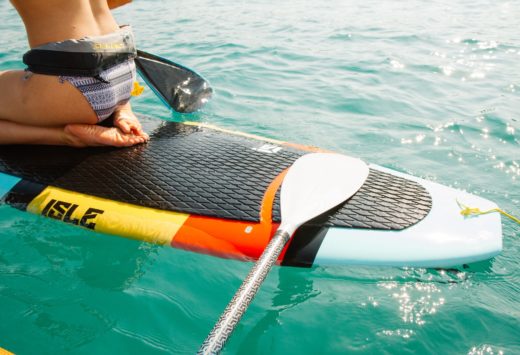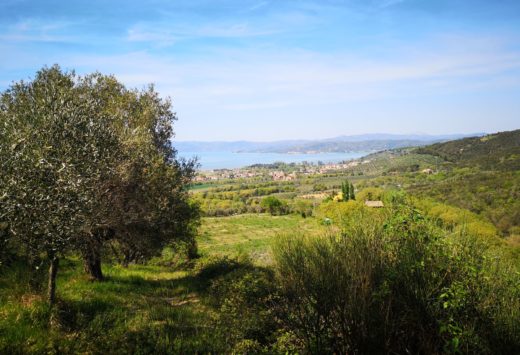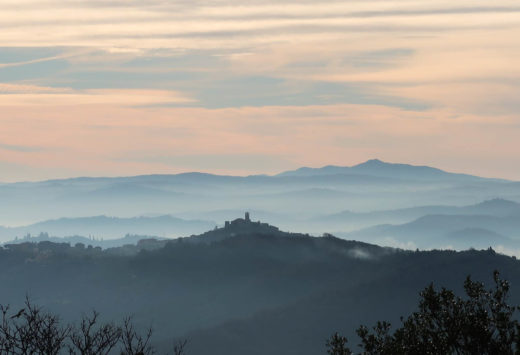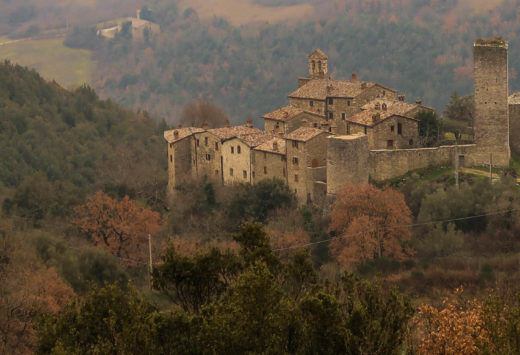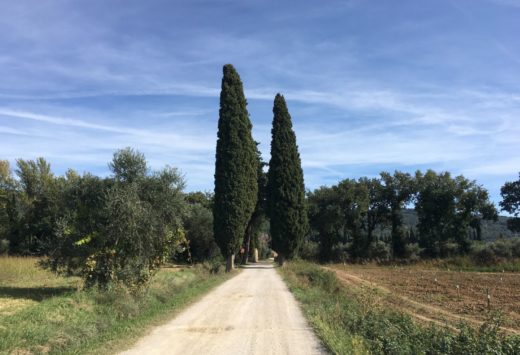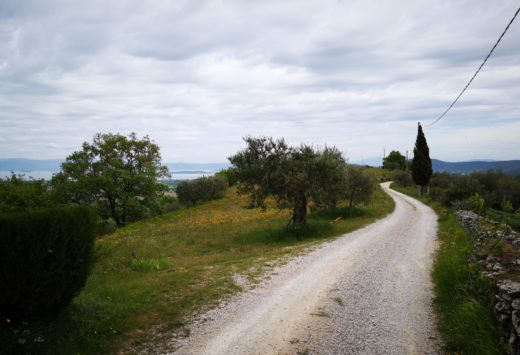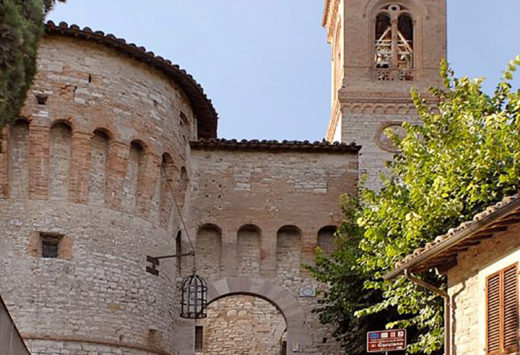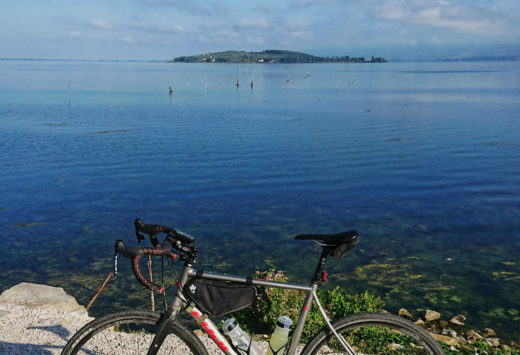Discover Corciano with us
13 km from Perugia, on the top of a hill that straddles the Trasimeno region and the Tiber valley, stands Corciano, regarded as one of the most beautiful villages in Italy. The origin of its name, as well as the exact date of its founding, are still debated among scholars due to the lack of definitive historical data, but there’s no doubting the striking beauty and peculiarity of this long-since sleepy medieval village.
Maria Sticco, a 20th-century writer from Coriano, cites its two outstanding features: its sublime beauty and its peacefulness. Anyone who has the good fortune to wander along the age-old paved streets that wind their way past pretty houses with their limestone and travertine facades, ablaze with flowering balconies and enchanting views, could not but enjoy the rarity of a place that has remained unspoilt and unchanged over the centuries, as if embracing the magical atmosphere of a timeless past within its walls.
Legend has it that the name Corciano derives from Ciano Razzeano, the son of Giano, founder of Perugia. According to the Vatican Code 4834, the village was founded by Coragino, Ulysses’ travelling companion. Popular tradition holds that Corciano means simply ‘the heart of Giano’ but the most likely explanation is that it derives from the Latin name Curtius, Corisius or Coricius, possibly a landowner in the area. While the date of its founding is uncertain, the settlement probably already existed in the Etruscan-Roman era, as the discovery of a necropolis of the time suggests. Whatever the case, this village has played a dominating role in the valley for centuries, its views embracing breath-taking, bucolic landscapes that reach as far as Lake Trasimeno and the Malbe and Amiata mountains.
Take the path known as the ‘sentiero dei mandorli’, especially in spring when the almond trees are in bloom, to see nature at its finest. Trekking, hiking, horse riding and cycling, in addition to visiting the beautiful old village and its museums, are the best way to ensure an exceptional and unforgettable experience. From the civic buildings to the churches, all lavish with incredible masterpieces, every corner is steeped in the magic and tranquillity of the past, far from the hustle and bustle of the madding crowd. And if all this were still not enough, don’t forget the village’s most important work of art: the local cuisine, which is as rustic and genuine as you can get. Don’t miss out on the chance to taste some of the typical local dishes such as palombaccio (a relative of the pigeon) and the minestra al battuto, a simple vegetable soup flavoured with the ham bones and ‘battuto’: finely chopped lard, marjoram and garlic.
Along with other nearby towns such as Perugia, Umbertide, Panicale and Città di Castello, to name just a few, Corciano is part of one of the five geographical areas with Umbria DOP certification, namely the ‘Colli del Trasimeno’. The Umbria region was the first in Italy to receive the title of DOP (Protected Designation of Origin) for its extra virgin olive oil, with its producers’ consortium committed to ensuring and protecting the genuineness of its premium product to consumers. The best time to taste Umbrian oil is in October and November during the numerous regional events dedicated to sales and tastings and snap up the chance to sample the oil of the Corciano area, made from different varieties of expertly-combined olives, including Moraiolo, Dolce Agogia, Frantoio and Leccino.
And if you choose a spring visit, go to Corciano in April, when the ‘Primavero dell’artigianato’ (Spring Craft Fair) takes over the streets of the old village for about 10 days, with multicoloured and festive craft stalls, workshops and market exhibits where you’ll be able to admire or snap up an example of the local craftwork, from glass to ceramics, to wrought iron, wood and embroidery.
Corciano will make sure all of your five senses are artfully entertained!



